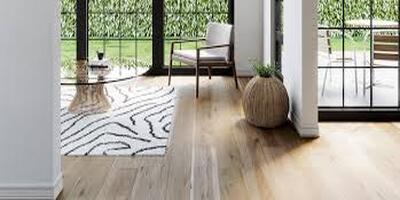Are you ready to transform your living space with a touch of elegance? Custom flooring installations can turn your ordinary floors into stunning works of art. In this guide, we’ll take you through the exciting journey of upgrading your home’s flooring with personalized flair. Get ready to discover the perfect blend of functionality and style!
Introduction:
Have you ever walked into a room and felt that something was missing? That’s where custom flooring comes into play. Imagine expressing your personality and style through the very foundation of your home. From the warmth of hardwood to the chicness of tiles, the possibilities are endless.
Assessing Your Space and Needs
Your home is unique, and so are your needs. Consider the purpose of each room. Will it endure high foot traffic, or is it a cozy corner for relaxation? By understanding how you’ll use the space, you can choose flooring that’s not only beautiful but also practical.
Choosing the Right Material
Let’s dive into the exciting world of flooring materials! Hardwood offers timeless charm, while laminate provides versatility without breaking the bank. Tiles offer durability and a myriad of designs, while carpet brings comfort underfoot. Vinyl is perfect for those seeking both style and resilience.
Setting the Budget: Costs and Considerations
Before embarking on your flooring journey, it’s important to establish a budget. Consider not only the cost of materials but also installation expenses. Don’t forget about potential additional costs like underlayment or trim pieces for that polished look.
Preparing for Installation
Getting ready for the installation day is crucial. Custom flooring the room of furniture and ensure the subfloor is in good condition. While some may opt for a DIY approach, professional installation ensures a flawless finish, especially for intricate designs.
Step-by-Step Installation Process
Professional installers bring your vision to life. They meticulously prepare the subfloor, lay the foundation, and then carefully place each piece of flooring. DIY enthusiasts, fear not! Follow manufacturer instructions, arm yourself with the right tools, and watch your floors transform.
Adding a Personalized Touch
Custom flooring installations offer the chance to infuse your personality into your home. Consider incorporating borders, inlays, or patterns to make a statement. Mixing different materials or designs can create a unique look that’s exclusively yours.
Maintenance Tips for Longevity
With great beauty comes great responsibility—maintenance! Regular cleaning is key to keeping your floors gleaming. From sweeping to mopping, small efforts go a long way. Address spills promptly and follow manufacturer guidelines to keep your floors looking their best.
Conclusion: Your Dream Floors Await
Custom flooring installations aren’t just about aesthetics; they’re about elevating your living experience. Your home is a canvas, and the floors are your masterpiece. By choosing the right materials, maintaining them, and adding personal touches, you’re on your way to creating a space that reflects you.
FAQ
Q: How long does a custom flooring installation usually take?
A: The timeframe varies based on factors like the chosen material, room size, and complexity of the design. On average, it can take anywhere from a few days to a week.
Q: Can I install hardwood flooring in my kitchen?
A: While hardwood is stunning, it’s not the best choice for kitchens due to moisture and potential spills. Opt for materials like tile or vinyl that handle water better.
Q: Is professional installation worth it?
A: Professional installation ensures a top-quality outcome, especially for intricate designs. It’s a worthwhile investment for a lasting and flawless result.
Q: How can I change the look of my custom flooring in the future?
A: Depending on the material, you can refinish hardwood, replace individual tiles, or choose removable floor coverings to switch up the vibe.
Q: Are environmentally friendly flooring options pricier?
A: Eco-friendly options like bamboo or cork are often similarly priced to conventional materials. The potential price difference is balanced by their positive environmental impact.

